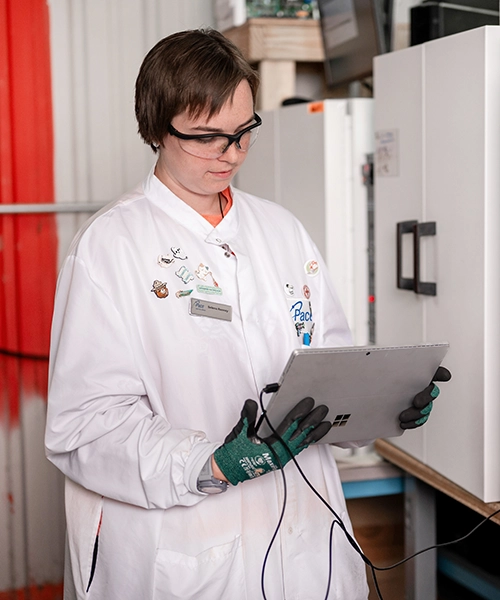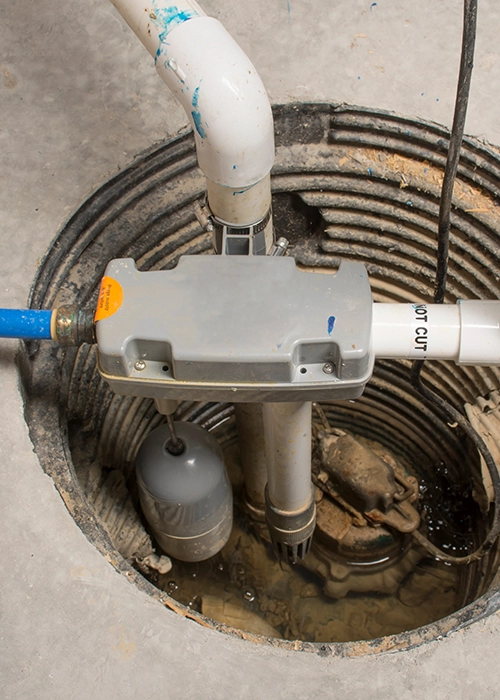Vapor Intrusion Testing
Vapor intrusion is increasingly recognized as an important exposure pathway, and state and federal agencies have placed greater emphasis on the remediation of contaminated sites. Pace® has been providing vapor intrusion testing for more than three decades. Our team has the experience and know-how to deliver reliable, defensible test results.
QUALITY RESULTS REQUIRE QUALITY TESTING
Ready to get started?
OR

What Is Vapor Intrusion?
Vapor intrusion refers to the process by which volatile chemicals migrate from a subsurface source, such as contaminated soil or groundwater, into the indoor air of overlying or adjacent buildings. In most cases, vapor intrusion is caused by contaminated vapors migrating through the soil directly into basements or foundation slabs. Vapor intrusion can be one of the more challenging environmental assessments because every site is different and evaluating exposure pathways can be problematic.
Vapor intrusion testing involves understanding the movement of VOCs from a subsurface to a building and the mixing of contaminants with indoor air. Over time, vapor intrusion processes are highly variable and can fluctuate spatially between buildings or even within one large building. State and federal guidelines suggest an approach that begins with simple screening and gradually progresses to a more complex, site-specific assessment that may involve multiple lines of evidence (MLE).
The Path To Indoor Air Contamination
Soil vapor may become contaminated when chemicals evaporate from subsurface sources. Chemicals that emit vapors are called “volatile chemicals.” Volatile chemicals include volatile organic compounds (VOCs), semi-volatile organic compounds (SVOCs), and inorganic substances such as elemental mercury. Subsurface sources of volatile chemicals include:
- Groundwater or soil that contains volatile chemicals
- Buried wastes
- Non-aqueous phase liquid (NAPL)
- Underground storage tanks or drums.
Primarily due to a difference between interior and exterior pressures, soil vapor can enter a building through cracks or perforations in slabs, basement floors, and walls and through openings around sump pumps or where pipes and electrical wires extend through the foundation. If contaminated soil vapor enters a building, it mixes with the existing air to adversely impact indoor air quality.

Why Choose Pace® For Vapor Intrusion Testing
Assessment of vapor intrusion must be carefully and repeatedly conducted by experienced professionals who understand the variability of these vapors and where, when, and how to collect indoor air samples.
Pace® offers a comprehensive combination of vapor intrusion delineation tools, soil vapor sampling equipment, and analytical capabilities that enable you to meet project and regulatory targets.
EXPERIENCED ANALYSTS
Pace® vapor intrusion professionals understand the variability of soil vapors and the analytical capabilities needed by the most demanding projects.
FAST RESULTS
Pace® offers a fast turnaround time, extensive capacity, and vast experience in the implementation of the EPA Vapor Intrusion Technical Guide and state-level regulations.
THE MOST ADVANCED METHODOLOGIES
With our advanced soil gas sampling equipment, testing, and analytical capabilities, you can have confidence in your sample collection and data quality.
On-Demand Webinar
This webinar provides Pace® insights from over three decades of work on vapor intrusion projects and the analysis of thousands of samples.
- Which compounds in soil gas and/or indoor air can be problematic?
- How do I correctly interpret difficult compound results to achieve stakeholder consensus?
- What are the different types of canisters available, and what are their pros and cons for vapor intrusion sampling?
- What does the mass spectrum tell us?
Additional Resources
Need to find a lab that can handle your unique requirements?
Contact us directly or download our list of environmental certifications across our network.